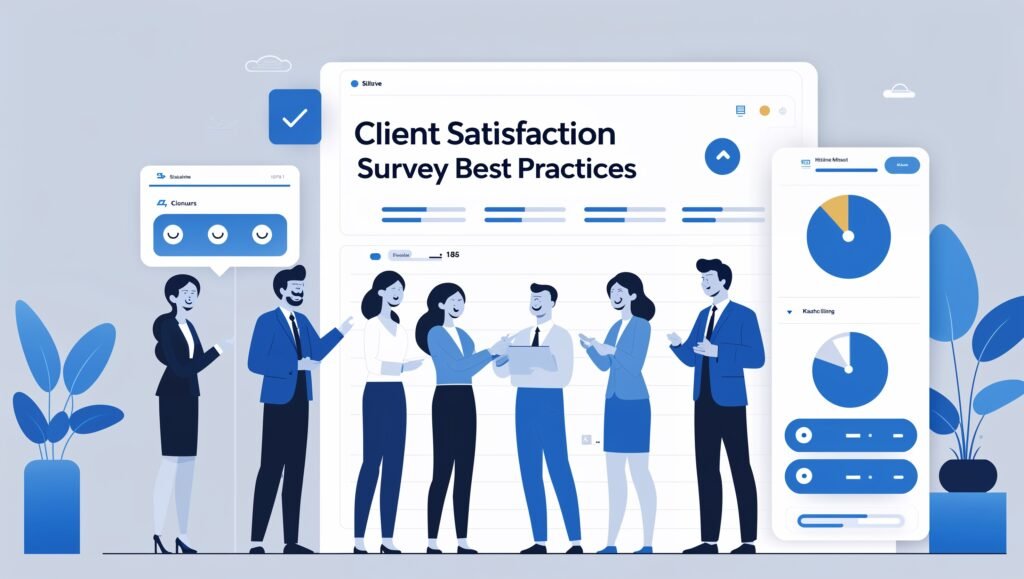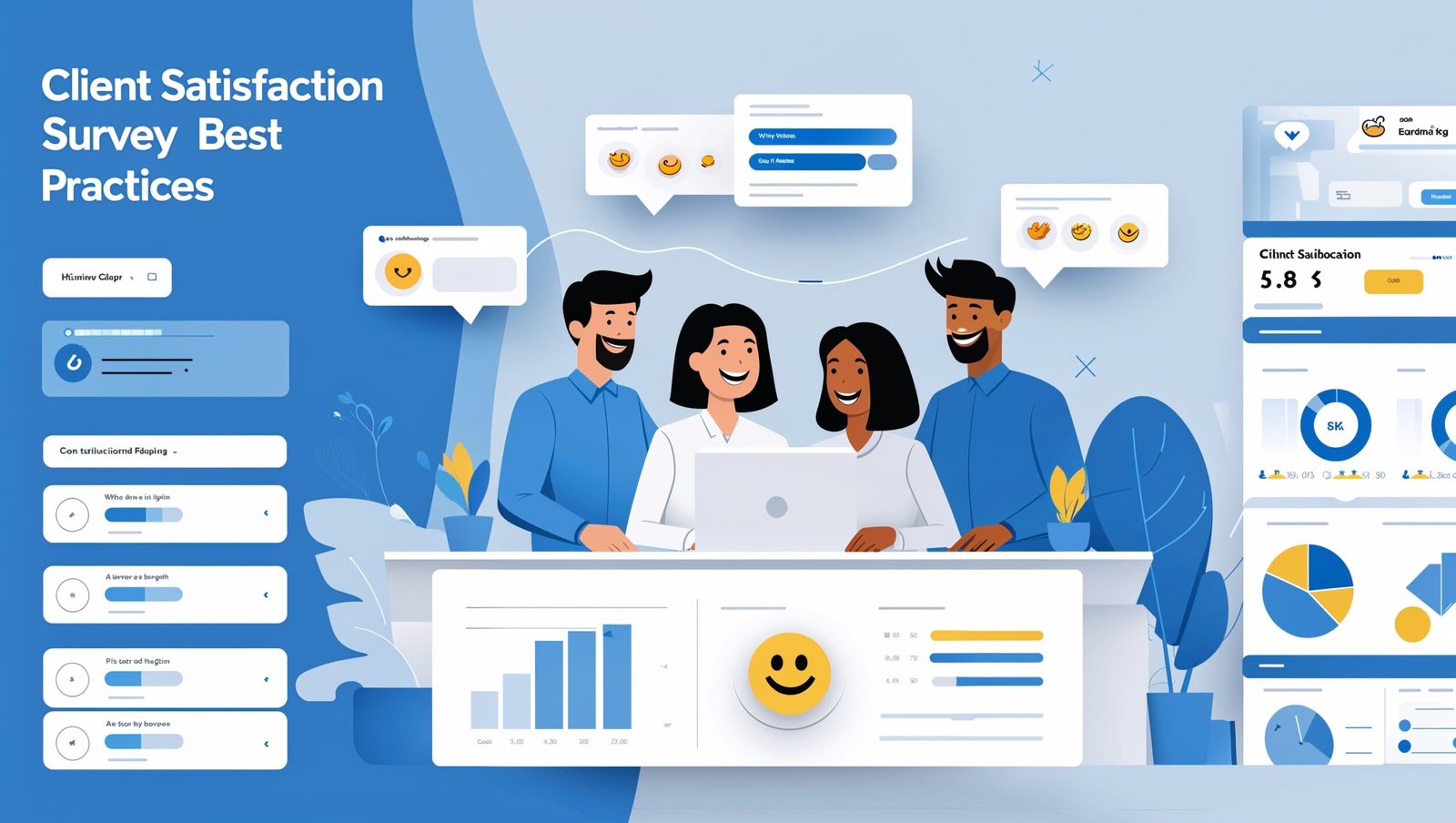In today’s hyper-competitive business environment, understanding your clients’ experiences and expectations is essential. A client satisfaction survey offers an effective way to gather insights, improve services, and boost client retention. In this blog, we will explore the best practices for creating and utilizing client satisfaction surveys to foster long-term relationships.
Why Client Satisfaction Surveys Matter
Client satisfaction surveys go beyond just asking “Are you happy?” They provide actionable data that help:
- Improve product/service quality
- Identify pain points in the client journey
- Enhance overall customer experience
- Build client trust and loyalty
- Increase retention and reduce churn
By collecting feedback at key touchpoints, businesses can take strategic actions based on real client sentiments.
Best Practices for Creating a Client Satisfaction Survey

1. Set Clear Objectives
Before creating your survey, define what you aim to learn. Do you want to know about your onboarding experience, customer support, or overall service quality? Clear goals help shape focused, relevant questions.
2. Keep It Short and Simple
Clients are more likely to complete a survey that respects their time. Stick to 5-10 questions and use straightforward language. Use multiple choice, rating scales, and yes/no formats to make it easy.
3. Use a Mix of Question Types
Use a blend of quantitative and qualitative questions:
- Rating Scales: “On a scale of 1 to 10, how satisfied are you with our service?”
- Multiple Choice: “Which service did you use the most this month?”
- Open-ended: “What can we do to improve your experience?”
4. Personalize the Experience
Address the client by name and customize questions based on their past interactions. This helps clients feel valued and increases response rates.
5. Ensure Anonymity When Needed
Some clients may be reluctant to provide honest feedback if they fear repercussions. Let them know their responses are confidential to encourage openness.
Using the Right Tools for Client Satisfaction Surveys
One of the easiest and most effective tools for surveys is PollHit’s Survey Templates. These templates are:
- Customizable
- Mobile-friendly
- Easy to integrate into emails and websites
Internal link: Explore client feedback form templates on PollHit
Timing is Everything: When to Send a Client Satisfaction Survey

1. After Key Interactions
Send surveys after:
- Onboarding
- Project completion
- Customer support interaction
2. Regular Check-ins
Quarterly or bi-annual surveys help track satisfaction trends and ongoing concerns.
3. After Negative Events
If a client has a bad experience, a follow-up survey shows you care about resolving issues.
Analyze and Act on Feedback
Collecting feedback is only the first step. You must:
- Categorize responses
- Identify trends and common complaints
- Share findings with relevant departments
- Create a feedback loop with your clients
Tip: Use PollHit’s analytics dashboard to easily visualize and interpret your survey results.
Internal link: See how PollHit’s dashboard helps you understand your data
Incentivize Survey Participation
Incentives like:
- Discounts
- Entry into giveaways
- Loyalty points
…can improve survey response rates. Just ensure it doesn’t bias the answers.
Be Transparent and Follow Up
Let clients know how their feedback made a difference. A simple “You said, we did” follow-up email builds trust and shows you’re listening.
Real-World Example: Retaining Clients Through Feedback
A leading SaaS provider used regular client satisfaction surveys to identify gaps in customer support. After adjusting response times and improving self-help resources, they saw a 25% drop in churn within six months.
Conclusion: Make Client Satisfaction Surveys Work for You

A well-designed client satisfaction survey can be a powerful growth tool. By following these best practices, you can better understand client needs, strengthen relationships, and boost retention.
Want to get started today? Try one of PollHit’s pre-designed survey templates and start collecting meaningful feedback now.
